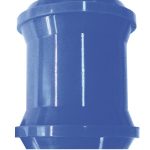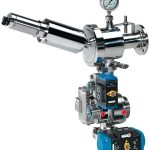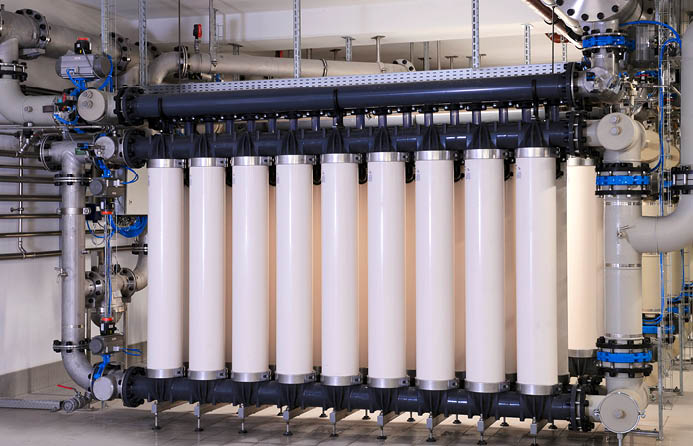Molchtechnik ist eine Reinigungstechnologie für alle Branchen, die dünn- und dickflüssige Produkte durch Rohrleitungssysteme fördern. Die Pharmaindustrie, die Produktion von Kosmetika oder die Feinchemie stellen jedoch besondere Anforderungen an Sicherheit und Hygiene. Die Anlagen müssen CIP/SIP-reinigbar und als Folge keimfrei sein. Kiesel realisiert einfache Molchsysteme mit manueller oder automatischerer Steuerung genauso wie hochkomplexe Anlagen. Das Programm enthält auch Molchsysteme für aseptische Bereiche. Pigging (scraping) technique is a cleaning method used in all industries that propel thin and thick liquid products through piping systems. The pharmaceutical industry, cosmetic production or fine chemistry have special demands and requirements for product safeness and hygiene. These systems must be CIP/SIP cleaned and thereafter germ free. Kiesel delivers simple scraper cleaning systems with manual or automatic controlling in the same manner as highly complex systems. The program also contains special scraper-cleaning systems for aseptic scopes.
Mit der Inline-Molchsendestation wurde eine einfache und preisgünstige Armatur für die Molchtechnik im Sterilbereich geschaffen. Sie eignet sich für alle Einsatzfälle, in denen eine CIP-Reinigung erforderlich ist, in der Lebensmittel- und Getränkeindustrie genauso wie in der Pharma- und Kosmetikproduktion. Der Molch wird zunächst durch eine Gabel in der erweiterten Molchkammer der Sendestation festgehalten. Das Produkt und die Reinigungsflüssigkeit umspülen ihn. Zur Molchfahrt wird der Molch mit einem Pneumatikzylinder in die Leitung vorgeschoben und gleichzeitig freigegeben. Die Molchsendestation hat einen Clampstutzen mit entsprechender Nennweite, an den die Versorgungsarmatur – bestehend aus Scheibenventilen für den Produkteingang, die CIP-Reinigungsflüssigkeit, Treibmittel und zur Entlüftung – angeschlossen wird. Die Scheibenventile sind speziell für die Versorgungsarmatur so ausgebildet, dass nur minimale Rohrstutzen an den Abzweigen entstehen. Durch die optimierte strömungstechnische Auslegung der Sendestation mit Versorgungsarmatur kann die CIP-Reinigung vollständig rückstandsfrei abreinigen. Der Funktionsablauf ist wie folgt:
- Grundstellung: Der Molch befindet sich in der erweiterten Kammer der Sendestation.
- Produkt wird gefördert: Der Molch wird in der Sendestation festgehalten und von Produkt umströmt.
- Molchreinigung: Der Molch wird in die Molchleitung vorgeschoben, freigegeben und vom Treibmittel durch die Molchleitung geschoben.
- Molch zurücksenden: Der Molch wird in der Sendestation aufgefangen und positioniert.
- CIP-Reinigung: Der Molch wird in der Sendestation umspült und gereinigt.
- CIP-Flüssigkeit entleeren: Durch eine Molchfahrt wird die CIP-Flüssigkeit aus der Rohrleitung verdrängt.
- Sterilisierung: Der Molch ist zurück in der Sendestation. Die gesamte Leitung wird mit Dampf sterilisiert.
Molchbares Sitzventil
Bei Produktwechsel wird das gerade fertiggestellte Produkt zur vollständigen Verwendung aus der Rohrleitung gemolcht und die CIP-/SIP-Reinigung läuft ab. Dabei hat sich das molchbare Sitzventil bewährt, das als Produkteingang bzw. als Produktausgang an der Molchleitung dient. In geschlossenem Zustand verläuft die Molchleitung völlig glatt und totraumfrei durch das Sitzventil, so dass eine Molchreinigung problemlos möglich ist. Mit dem Ventil kann auch ein molchbarer Ventilknoten aufgebaut werden. Je nach Bedarf wird der Knoten mit molchbaren T-Stücken in der Eingangsebene ausgeführt. Er lässt sich in beiden Richtungen unabhängig voneinander molchen. Das Kiesel-Doppelsitzventil hat zwei Ventilabdichtungen, die durch eine Spül- und Leckagekammer voneinander getrennt sind. Ein pneumatisches Leckageventil stellt sicher, dass das Produkt unter anderem von der Reinigungsflüssigkeit sicher getrennt ist.
Geschwindigkeitsregler
Der Molchgeschwindigkeitsregler oder -tempomat garantiert eine gleichmäßige Molchgeschwindigkeit bei Produkten mit verschiedenen Viskositäten, langen Molchleitungen, Molchleitungen mit großen Höhenunterschieden, Abfüllung von Produkten ohne „Spritzen“ und Molchfahrten mit einem bzw. zwei Molchen. Er besteht aus einem Regelsystem, das die Durchflussmenge des gasförmigen Treibmediums über den Druck regelt und mit dem eingegebenen Sollwert vergleicht. Das Regelventil und die Drucksensoren bilden eine Baueinheit. Die Sensoren sind in den Anschlussrohren zum Ventil integriert.
Der Druckabfall über der Drosselstelle Regelventil wird kontinuierlich gemessen. Diese Druckdifferenz ist eine Kenngröße für den Volumenstrom durch das Regelventil. Dieser Messwert wird mit dem Sollwert verglichen, in einem PID-Regler bewertet und als neuer Sollwert auf den Stellungsregler geschaltet. Der darauf abgestimmte Molchstaudruckregler ist ein kombiniertes Entlüftungs-Sicherheitsventil und ersetzt das Treibmittelentlüftungsventil in der Molchleitung. Er garantiert eine gleichmäßige Molchrückfahrt bei Luft-Luft-Molchungen, wodurch Anlagenstillstände verhindert werden.
With the Inline-pig-sending-station, a simple and low-priced armature was created for the scraper-cleaning of pipelines for products demanding sterile applications. It is suitable for all types of application in which CIP cleaning is necessary, in the food and beverage industry exactly the same as in the pharmaceutical and cosmetic production. The scraper-cleaning device (pig) is held first by a fork in the extended scrapper-cleaning chamber of the master sending station. The product and/or the cleaning-liquid circulate around to wash it. To get the pigging device into motion, it is guided forward into the pipeline by a pneumatic cylinder and released at the same time. The pig sending station has a special clamp fitting with an appropriate nominal width which is attached to the supplying armature (consisting of plate valves for product entrance, the CIP cleaning liquid, propellant and for air-bleeding). The plate valves are specially constructed for the supplying armature in such a way that only minimum pipe connections at the branches are needed. Because of the optimized flow-technical design of the master sending station with the supplying armature, the CIP cleaning can accomplish residue free cleaning.
The operation sequence runs like this:
- Home position: The scraper-cleaning device (pig) is sitting in the extended chamber of the master sending station.
- Product is extracted: The pigging device is tightly held in the master sending station and circulated around by the product.
- Pig-cleaning: The scraping-device is put forward, released into the pipeline and then propelled through the pipeline scraping out product residue.
- Return of the pig to home position: The pig is fielded and then brought back to the master sending station.
- CIP-cleaning: The pig device is washed around and cleaned in the master sending station.
- CIP cleaning-liquid removal: The CIP cleaning-liquid from the piping is displaced by sending the pigging device through the line.
- Sterilization: The pigging-device has been returned to the master sending station. The entire line is then sterilized with steam.
Pig-cleaning seat-valve
With product change, the last product is completely scraped out of the pipelines and then the CIP-cleaning takes place. Thereby the pig-cleaning seat-valve guarantees the correct procedure of product entrance and/or product exit in the piping system. In a closed state the pipeline cleaning runs fully smooth and free of dead space because of the seat-valve, which makes it possible for the scraper cleaning to run problem-free. Also with the valve, a pig-cleaning valve joint can be built-on. Depending upon what is needed, the joint with scraper-cleaning T-fittings is implemented at the entrance section. It allows for independent scraper cleanings in both directions. The Kiesel double seat-valve has two valve seals which are separated from each other by a rinsing and a leakage chamber. A pneumatic leakage valve guarantees that the product is kept safely separate from other products and especially from the cleaning liquids.
Speed regulator
The speed regulator called the “Tempomat” guarantees an even or steady flow-speed of the moving scrapping-device with products having various viscosities, for extra long piping systems, pipelines with large differences in height, filling of products without „sputtering“ and for pig propulsion having two pigging devices. It consists of a monitoring system, which regulates the flow rate of the gaseous driving medium by pressure and compares it with the given desired value. The regulating valve and the pressure sensors form a structural unit. The sensors are integrated in the connecting pipes to the valve. The decrease of pressure over the throttle point regulating valve is continuously measured. This difference of pressure is a parameter for the flow rate by the regulating valve. This measured value is compared with the desired value, evaluated in a PID controller and switched over as new desired value to the valve position controller. The attached well co-ordinated scraper-cleaning accumulated pressure control valve is a combination exhaust relief valve and replaces the propellant bleed valve in the scraper-cleaning system. It guarantees an even return trip of the pigging device with air-air scraping whereby operational stops are prevented.
Top Products 489
Unsere Webinar-Empfehlung
Membranfiltration ist ein wichtiger Teil der industriellen Wasseraufbereitung, um die gewünschte Wasserqualität zu erreichen. Erfahren Sie mehr über den optimierten Anlagenbetrieb durch den Einsatz passender Ventile und Armaturen.
Teilen:













